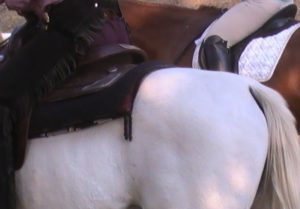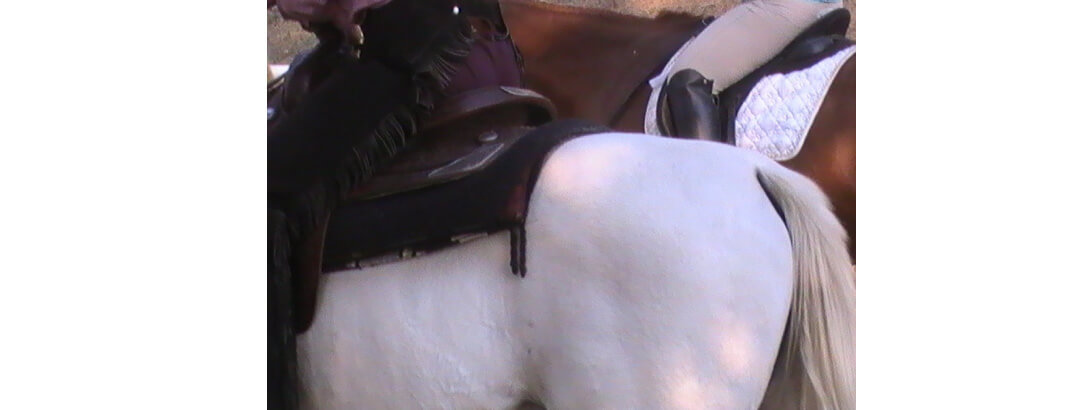What Dressage Offers the Western Horse
by Michelle Binder-Zolezzi

Last month I tried to define western dressage. Once there is a working definition, we can then ask the question, “why do it?” I asked members in different organizations why they couldn’t just buy a dressage saddle and ride dressage? This related to concerns expressed by judges, riders and trainers. The only response came back from Debbie Beth-Halachmy, wife of Eitan Beth-Halachmy, founder of Cowboy Dressage™. It is beautiful. She said, “Because I love my western horse. I am a western rider; it is part of who I am. I don’t want to change, but I do want to be a better rider. Dressage can help but it will not change who I am or what my horse is. If I wanted a Grand Prix horse I would make the switch, but I don’t. I just want to help my horse be better within the hooves he was born in.”
Beautiful thinking and sharing from the heart. Thank you Debbie.
Like Debbie, I love my western horses. I love my dressage horses too. And my Arabians… and our rescue horses. We ride western horses western because we love the discipline. Western dressage truly brings out the best in the horses. Some people question the validity of western work, some the validity of modern dressage, some recognize the value and the differences in all the expressions of training. As a western rider, I do not want to “quicken” my horse beyond the tempo at which it can maintain relaxation, connection and balance. As a dressage rider, I do want my western horse to have enough forward energy and willingness to cover ground so that true collection can be achieved over time. Why do I want my western horse to engage? Engagement develops balance and that, combined with relaxation of the topline maintains the wonderful “rideability” enjoyed when sitting on the back of a well-trained western dressage horse. Posting? Yes, of course western dressage riders may have to post, especially to help the horses develop freedom and swing in the gaits. The point in doing western dressage is to become better riders so the horses can be partners for a long time. Good dressage maintains, sustains and restores soundness and ensures that the horses’ backs stay soft and supple into their age. Dressage makes better riders and better riders make the horses better. My best school horse is a 28-year-old Arabian who is more sound at 28 than when he came to the program at 15. Western dressage allows us to make that happen in our stock saddles and with respect for our western horses’ gaits and abilities.
Western riding traditions have, at their foundation, ranch and trail work. Dressage has at its foundation, principles that made horses that went into battle or to the bullfighting ring. Today’s competitive warm blood dressage horses are not asked to go to battle and those riders who prefer the type of movement and quality of gaits found in the stock horses, may not want to ride a big moving warmblood— in any kind of saddle! Similarly, those riders who want to experience the joy of training a soft moving western horse to go in balance and with connection into the upper levels of dressage cannot imagine doing so while sitting on one of today’s western pleasure stock horses or beautiful, swan-necked Arabians. Again, the riders are the best resource and they write specifically and descriptively about why they enjoy dressage in western saddles:
“It is a wonderful way to stimulate a horse’s mind…”
“I love dressage, I love western and I love the thought that the horses involved may be good at their jobs not because of the breeds they represent but because of the training they have been given, the understanding of supple work and the lightness that can happen when a rider works his/her horse with care and happiness.”
“Western dressage has given me back my confidence by helping me to build a more solid relationship with my horse.”
Riders make a distinction between what they want western dressage to be and the training seen in both the western pleasure ring and in the modern dressage ring. When we listen, we hear a yearning for more activity and impulsion from western working horses; for more softness and less contact from dressage trained horses. It is also clear that riders want a progressive training program that helps them cultivate a positive relationship with their horses. This means blending different ideas into practical application in the riding arena.
Published October 2013 Issue
Michelle Binder is the founder of Relational Riding Academy, a program that utilizes dressage as fundamental training for all horses performing in all disciplines. A rider for 40 years, Michelle first competed English and Western rail horses in Washington, then Thoroughbred Hunters in Kentucky. In 1987 she began pursuing Combined Training though USCTA Novice and Training levels. She settled into dressage in the Pacific Northwest in 1995. Over the years Michelle trained extensively with Sue Sherry of Michigan. She has participated in clinics and instructors workshops with many well known instructors, including Sally Swift, Mary Wanless, Gerhard Politz, Jeff Cook, Dr. Rudolph Vlatten and, most recently, Claus Bergener, Grand Prix Judge for the GNEF.
In addition to being an ARIA certified instructor since 1989, Michelle has been a professional trainer since 1994. In the 1997 show season, Michelle finished “V.P. Medly” 5th in the nation in USDF All Breed Awards for Arabian Sport Horses and 26th in the nation for all breeds. In 2006, “A Perfect Mr. Re” finished 8th in the nation in the AACAP Awards for Appaloosas in dressage. In 2007, King of Broken Hearts, a four year old Appaloosa stallion qualified for the ApHC World Show, trained and ridden almost exclusively by Michelle for Vision Quest Ranch.
relationalridingacademy.com






